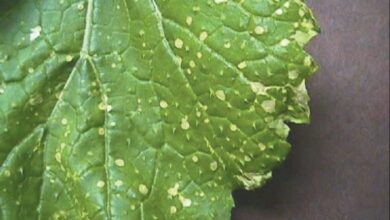Common Pests of Lettuce: Information on Lettuce Pest Control

Any variety of lettuce is fairly easy to grow; however, most varieties are susceptible to insect pests that attack lettuce and either kill it completely or cause irreparable damage. Read on to learn more about these pests and when insecticides for lettuce may be needed to control them.
Common Pests of Lettuce
There are a number of pests that attack lettuce plants. Lettuce parasites are among the most common:
- Aphids
- The army worms
- Corn ears
- Crickets
- Black beetles
- Flea beetles
- Garden Syphilis
- Grasshopper
- Leaf miners
- Nematodes
- Snails and slugs
- Travel
- Vegetable weevils
- White flies
Depending on your climate and region, you may find some or all of these pests in lettuce plants. As you can see, not only are you looking for tender greens, but all the insects in the city have patterns on their romaine lettuce.
Tips for controlling lettuce pests
Here are some things to look for and tips for controlling some of the lettuce pests mentioned above:
Aphids – Aphids are a four-fold threat. They first suck water and nutrients from the plant tissue, causing rolled leaves and the disappearance of young plants. Then they are often parasitized and dead aphids do not rinse the leaves. Thirdly, aphids act as vectors for viruses that often help introduce diseases such as lettuce mosaic. Finally, aphids deposit large amounts of molasses on the leaves, which promotes the growth of sooty mould.
One method of aphid control is to introduce or encourage natural predators such as ladybugs, lacewings, bugs, flower flies, parasitic wasps and birds. Horticultural soap or neem oil can also be used to control aphid populations. There are no systemic insecticides to control aphids.
Caterpillars – The most damaging group of insect pests that attack lettuce is the lepidopteran family (caterpillars), which includes many varieties of cutworms, army worms, corn earworm and cabbage looper. Each type has a different feeding habit with different life cycles that feed on different areas of the lettuce, but the result is the same: the foliage is veined, shredded – even eaten whole. Some lepidoptera have natural predators that can be encouraged; otherwise, finding an effective insecticide may be the answer.
Thrips – Thrips can affect the entire lettuce plant at all stages of growth and eventually cause leaf malformations. They are also vectors of certain lettuce diseases.
Leaf miners – Leaf miners insert eggs into the upper surface of the leaf, which in turn turn turn into worms. The use of the insecticide spinosad in commercial agriculture has reduced the infestation, although there is now some evidence of resistance to this insecticide.
Beetles – Beetle varieties are mainly soil infecting insects; their larvae hatch in the soil and often feed on the roots of lettuce plants.
Slugs and Snails – Slugs and snails like young tender green lettuces and can voraciously erase any trace of seedlings almost as soon as they are planted. They hide during the day among weeds, plant debris, stones, boards, ground cover and anything near the ground. It is therefore important to maintain a clean area around lettuce shoots to discourage them. Also, use drip irrigation to reduce moisture and wet areas where these creatures congregate. Certain types of plants such as nasturtiums, begonias, fuchsias, geraniums, lavender, rosemary and sage are avoided by slugs and snails, so including these plants in or near lettuce rows should help.
Traps, organic baits and barriers are useful tools for the elimination of snails and slugs. Water the area lightly to encourage slugs and snails to come out and set the bait in the afternoon or early evening. If you are not overly sensitive, an effective method is to manually remove insects from living areas two hours after dark using a flashlight.
Insecticides or chemical control of lettuce
If cultural controls, such as mulching or removal of debris and vegetation, and biological controls, such as natural predation, cannot manage the lettuce pest problem, you may need to use chemical controls.
Azadirachtin (Neemix), which is a natural compound derived from the neem tree, is effective against caterpillars and aphids. Bacillus thuringiensis is a natural soil bacterium that can help eradicate caterpillars.
Spinosad is used to control lepidopteran larvae and leafminers. However, its use over the years has led to resistance in some insect species. Compounds containing methoxyfenozide are also used to control caterpillar infestations.




